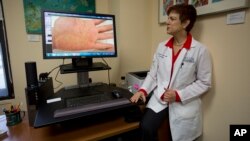When you're sick, one of the hardest parts about getting better is getting up and getting to the doctor. It's a first-world problem for most Americans who live in cities or suburbs, but what if the doctor is 40 kilometers away, or 400 kilometers?
Soon, the solution may be just a mouse click away. It's called telehealth, and it links patients and doctors using computers or mobile devices. Some researchers think it will revolutionize health care in the next decade.
Telemedicine is now used to some extent to monitor heart patients and to connect doctors and distant emergency rooms.
In the United States, veterans benefited from 2 million telemedicine visits in 2014 through the government’s health care service for them.
But in the next decade, telemedicine or virtual care will evolve into telehealth, say the authors of an article in The New England Journal of Medicine.
Utilizing computers or mobile devices, doctors and nurses could be available 24 hours a day at relatively low cost to assess emergency situations, like heart attack or stroke.
Ray Dorsey, a neurologist at University of Rochester Medical Center in Rochester, New York, says telehealth technology could benefit people in other countries. He said that in developing parts of the world such as China or India, telehealth will be increasingly seen as "a means to provide unprecedented access to care where previously care has just largely been inaccessible.”
Accessible to nearly everyone
The increasing use of smartphones worldwide has the potential to revolutionize medical care. In the world of telehealth, patients will be able to communicate with health care specialists directly from their homes, and school nurses will be able to talk with doctors directly and get information about why a child is not feeling well.
“And it’s an evaluation in a timely, convenient way without having to go to the emergency room or an urgent care center, or even a pediatrician,” said Dorsey. “I think in the future it will increasingly be applied to chronic conditions to help reduce costs.”
For example, telehealth could help doctors keep an eye on patients with chronic conditions such as diabetes or Parkinson’s disease.
The technology also could be combined with wireless, wearable devices to watch over serious disorders such as congestive heart failure.
What’s driving telehealth
In the article, Dorsey and co-author Eric Topol with Scripps Research Institute in California predict a number of trends in the evolution of telehealth.
It will be driven by the need to make health care more convenient and cost-effective for patients and doctors alike.
It will expand the traditional use of telemedicine from general doctors to specialists such as psychiatrists, neurologists and dermatologists.
The biggest challenge, according to Dorsey, is the digital divide, where those who need health care assistance the most don’t have access to a computer or smartphone.
In the end, they say, telehealth won’t replace office visits, but it could fill in the gaps, enabling medical personnel to meet the growing burden of chronic disease and increasing access to badly needed health care worldwide.





